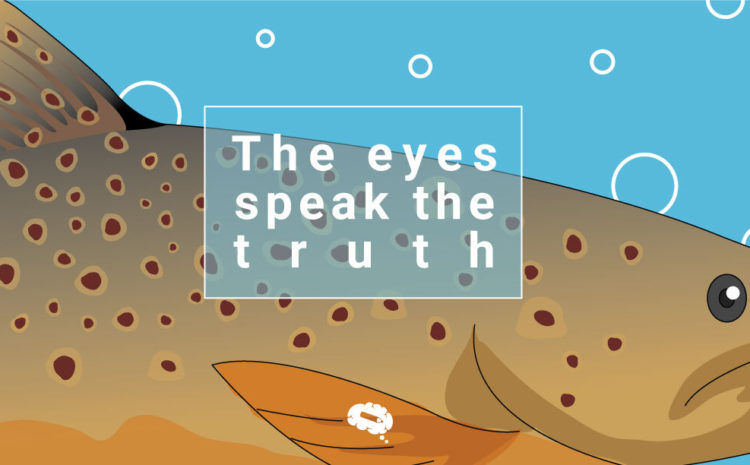That’s right, all the answers lie in the eyes. Even when it comes to the history of the fishes.
The scientist Miranda Bell and his team from the University of California illustrated the use of fish eyeballs lenses to predict the shifts in the diet and migration of fishes.
Aquatic animal migration is usually under the influence of several environmental and human factors that make it necessary to be conserved and protected.
The isotope analysis of isotopes elements has come to light as a useful tool for studying the migration of fishes. They studied Oncorhynchus tshawytscha (chinook Salmon) in various habitats like the hatchery, river and the seasonal floodplain.

The observation and analysis:
Isotopes are elements that have the same number of protons but a different number of neutrons that don’t decay over time.
Now, these isotopes elements have been associated with the determination of the dietary source of migratory animals.
The laminae of the eyeball lenses are said to be rich in proteins. These proteins are bound by isotopes elements that lead to an isotopic signature that can be evaluated through stable isotope analysis.
The juvenile Salmon fish was studied under three different isotopic habitats with a different food web to quantify the archival tissue of the fish eyeball.
The stable isotope elements used were sulphur 35, carbon 13, and nitrogen 15 (34S, 13C,15N).
The sulphur isotope is useful in learning dietary sources. The fish from inshore migration is rich in carbon 13 isotope hence it is used to determine the migratory movement.
The nitrogen isotope is utilised in the governing of the trophic levels in migratory animals.
The stable isotope analysis is formulated on the basis of the “you are what you eat” concept.
On this basis, the scientists looked out for isotopes elements such as sulphur, carbon and nitrogen in the tissues of the adult Salmon fish grown in three variant habitats.
Their study led to the finding of the fish grown in the seasonal floodplain had more layers of the lens as well it grew way faster than the ones grown in the river and hatchery habitat.
Also, the isotope analysis revealed that fishes had a high content of carbon and sulphur due to the rice fields of the Bypass.
The binding of the eye fish ball proteins and the isotope element was used to analyse the diet content.
Apart from this, the juvenile Salmon fish had a stable isotope element recorded in their eyeballs lens which is what led to the comparison with the adult fish for the overview of its habitat and dietary source.
This stable isotope analysis (SIA) tool has widened the scope for various conservation projects. It could be used to isolate habitats for various migratory animals since they are highly affected due to the current climatic changes and also due to human activities.
To know more about their research, check out the reference given below.

Subscribe to our newsletter
Exclusive high quality content about effective visual
communication in science.




